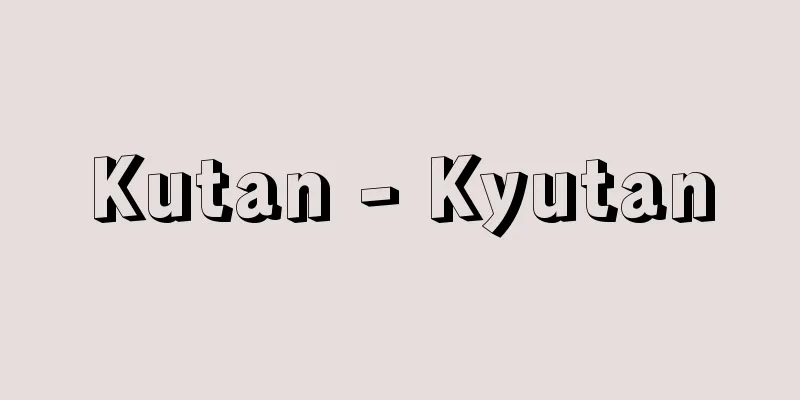Metal processing

|
A general term for the process of creating products with a specific shape and dimensions for a specific purpose. Its origins date back to the production of bronze weapons and ornaments during the Bronze Age (4000-2000 BC). Metalworking is broadly divided into two types: removal, in which a part of the material is cut or melted away to create a specific shape, and transfer, in which a mold is used to transfer the shape onto the material. In addition, welding, in which multiple metal parts are joined together to create a single piece, and surface treatment, in which only the metal surface is given properties such as wear resistance and corrosion resistance, are also included in metalworking in a broad sense. Removal processes include cutting, electrochemical processing, and electrical discharge processing. Cutting is a process in which a part of the material is cut away using a blade, and is also called machining. In contrast, electrochemical and electrical discharge processing are removal processes in which electrical energy is used to electrochemically dissolve a part of the material (electrochemical processing) or to melt it with the high heat caused by electrical discharge (electrical discharge processing), and are also called electrical processing. They are used to process metal materials that are too hard to cut. Other techniques include laser processing, which can focus light energy to melt materials and create holes as small as 0.01 mm in diameter, and ultrasonic processing, which uses ultrasonic energy. Transfer processing includes casting, powder metallurgy, and plastic processing. Casting involves pouring molten metal into a mold and letting it cool and solidify to create a product, and can be used to produce complex-shaped items such as bronze statues and sculptures. When fine metal powder is poured into a mold and compressed, and then kept at high temperatures in a furnace for a long time, the metal powder bonds tightly, resulting in a product with extremely high strength. This method is called powder metallurgy, and can produce products that are as hard as diamonds (the hardest material on earth). Plastic processing is a process in which metal materials are deformed into a desired shape by applying a large force through a mold tool, and there are various methods such as rolling, forging, extrusion, drawing, and sheet metal pressing. These transfer processing methods are different from subtractive processing in that they have a large effect on saving materials. Generally, metal products are required to have strength, surface gloss, dimensional accuracy, etc. in addition to the physical and chemical properties of the metal material depending on the application, so the most economical processing method that meets these requirements is selected and implemented. In recent years, with the advancement of technology, product requirements have become more and more sophisticated, and in order to produce more precise and more economically, automation technology incorporating computers has been introduced into the field of metal processing, realizing the realization of advanced production technology. In addition, new technologies have been developed that combine the various properties of metals with processing methods to create products with superior characteristics, and metal processing methods are also being applied to the molding of composite materials that combine strong non-metallic materials such as carbon fiber with metal materials, and the processing of non-metallic materials such as plastics and ceramics. [Takahashi Hiroo] Source: Shogakukan Encyclopedia Nipponica About Encyclopedia Nipponica Information | Legend |
|
金属材料を使用目的にあわせて所定の形状、寸法をもつ製品につくりあげる手段の総称。起源は青銅器時代(前4000~前2000)の青銅製の武器および装飾品の製造にさかのぼる。金属加工は、材料の一部分を削るか溶解除去して所定形状にする除去加工と、型を用いてその形状を材料に写し出す転写加工の二つに大別されるが、そのほかに、複数個の金属部品を接合して一体のものにつくりあげる溶接、また金属表面のみに耐摩耗性や耐食性などの性質を付与する表面処理も広義には金属加工に含まれる。除去加工には切削加工、電解加工、放電加工などがある。切削加工は刃物を用いて材料の一部を削り取る加工で、機械加工ともよばれる。これに対し電解および放電加工は、電気エネルギーを利用して材料の一部を電気化学的に溶解(電解加工)または放電に伴う高熱で溶融(放電加工)する除去加工で、電気加工ともよばれ、硬くて切削できない金属材料の加工に適用される。このほかに、光エネルギーを焦点に集めて材料を溶融させ、直径0.01ミリメートルという小穴をあけることもできるレーザー加工や、超音波エネルギーを利用する超音波加工などがある。転写加工には鋳造、粉末冶金(やきん)、塑性加工などがある。鋳型の中に溶融した金属を流し込んで冷却凝固させて製品とするのが鋳造であり、銅像や彫刻品のような複雑形状品の製造が可能である。微細な金属粉末を金型に流し込んで圧(お)し固め、炉の中で高温に長時間保つと金属粉末どうしが固く結合し、非常に強度の高い製品が得られる。この方法は粉末冶金とよばれ、ダイヤモンド(地球上でもっとも硬い)に匹敵するほど硬い製品をもつくれる。塑性加工は、金属材料に型工具を介し、大きな力を加えて変形させ所定の形状にする加工で、圧延、鍛造、押出し、引抜き、板金プレス加工など種々の方法がある。これら転写加工は除去加工と異なり材料節減の効果が大きい。一般に金属製品には用途に応じて、金属材料のもつ物理的性質や化学的性質のほかに、強度、表面光沢、寸法精度などが要求されるので、それらの要求に適合するもっとも経済的な加工方法が選択実施される。近年、技術の進歩とともに、製品への要求は高度化の一途をたどり、より精密な、より経済的な生産のために、金属加工の分野にもコンピュータを取り込んだ自動化技術が導入され、高度の生産技術の具体化を達成している。また、金属のもつ各種の性質と加工法とを組み合わせて従来より一段と優れた特性をもつ製品をつくりだす新技術の開発や、炭素繊維などのような強い非金属材料と金属材料を配合した複合材料の成形、プラスチックやセラミックスのような非金属材料の加工にも、金属加工の手段が応用されている。 [高橋裕男] 出典 小学館 日本大百科全書(ニッポニカ)日本大百科全書(ニッポニカ)について 情報 | 凡例 |
>>: Metal - kinzoku (English spelling) metal
Recommend
Fuji whale (English name) Etmopterus lucifer
A marine fish of the family Squamata in the order ...
Kijimoto Rōzō
Also known as "Rozo." Legal scholar. Gr...
Tokutomi Soho
A journalist and historian spanning three generat...
Carel van Mander
1548‐1606 Dutch painter, poet, and art theorist. B...
Ionization chamber - denribako
A device that measures the intensity, dose, and e...
Jacksonian Democracy
A term used to describe the "democratic"...
Contract master - Ukeoi oyakata
...This is the so-called internal contracting sys...
Coal chemical industry - sekitankagakukougyou (English name) coal chemical industry
This refers to the industry that uses the organic...
Anna Harriet Leonowens
1831‐1914 An English royal English teacher invited...
"Thoughts on the snail"
…The word kanamu (snail), which was known in anci...
Virus - Virus
A program that exploits security flaws or bugs in ...
Brain - Sac
In the nervous system of animals, the brain is th...
The Land of Izumo
A woman who is said to have laid the foundations o...
Tang liaison officer
The Edo Shogunate placed translators in Nagasaki ...
Investment trust - Toushi Shintaku (English name) investment trust
A system in which funds from various investors, l...









